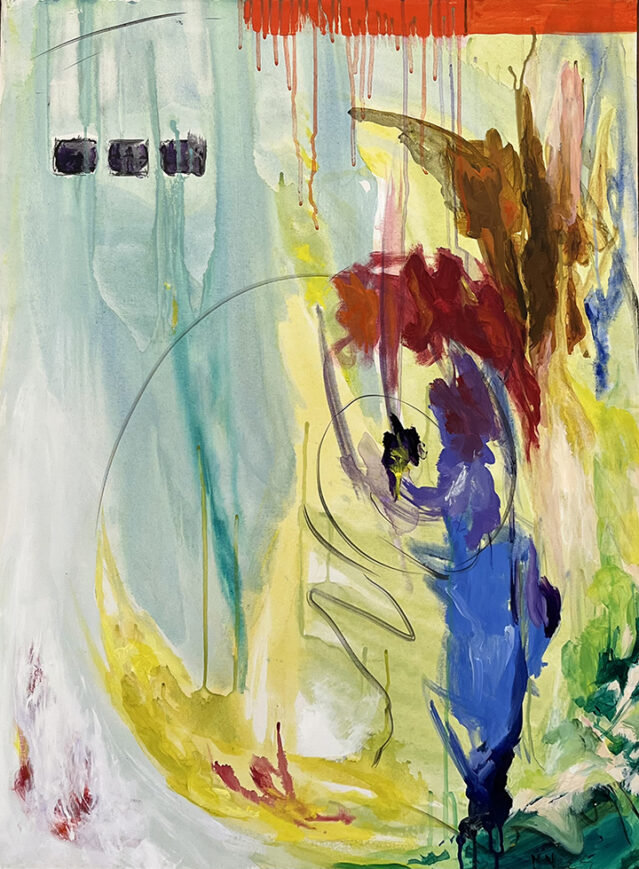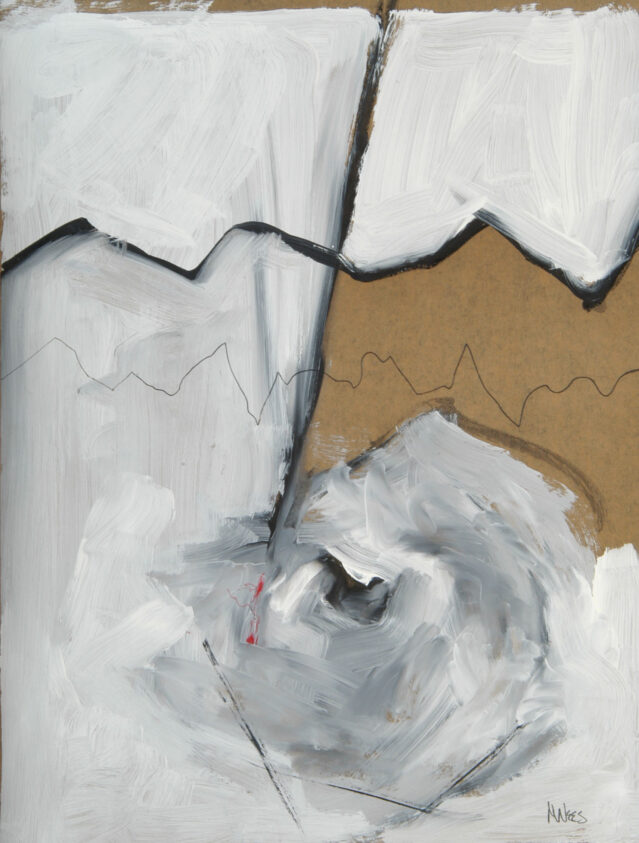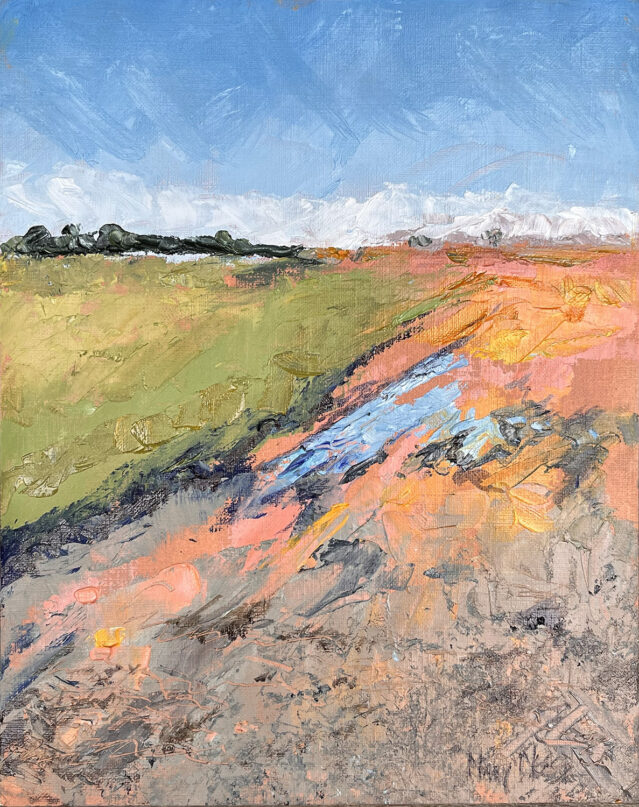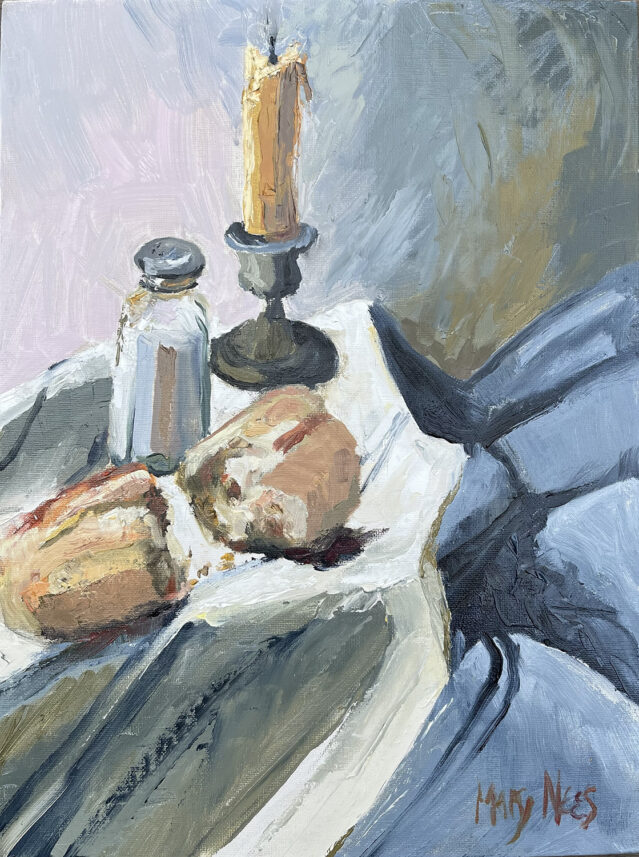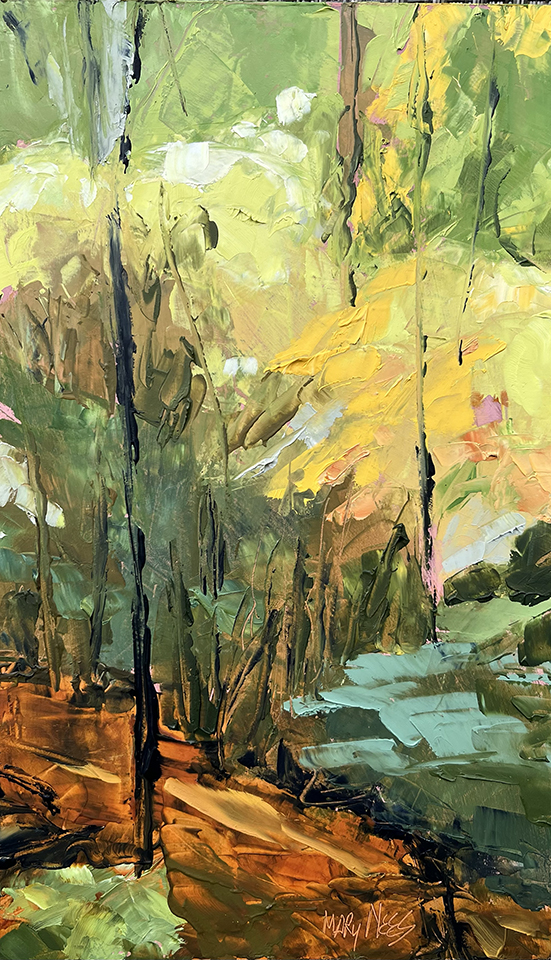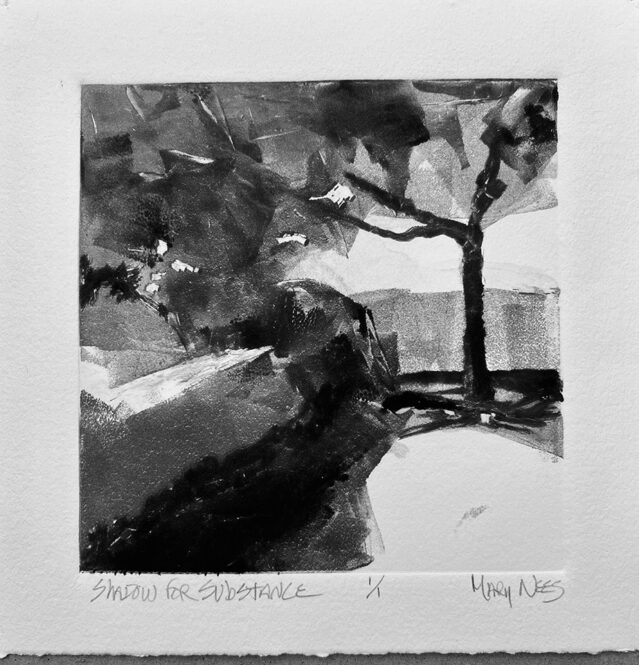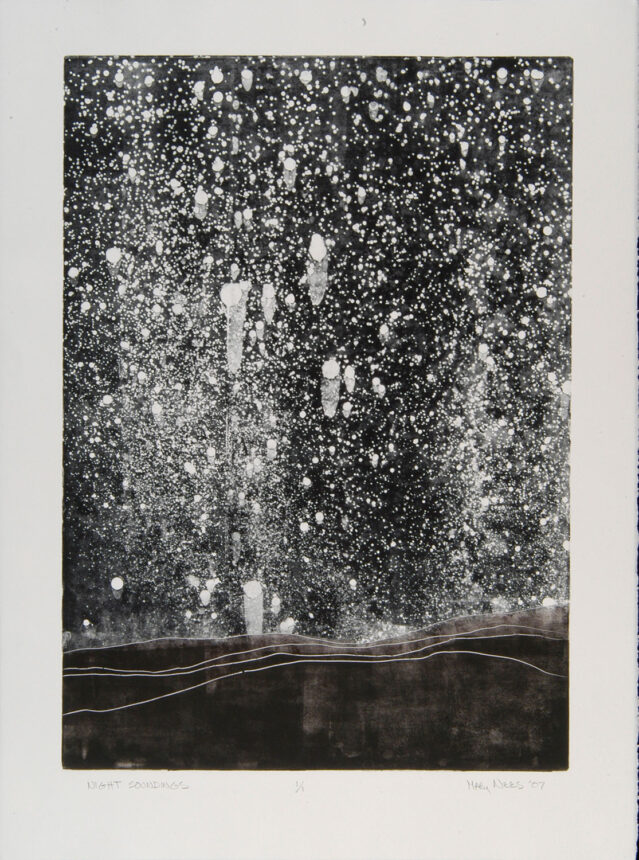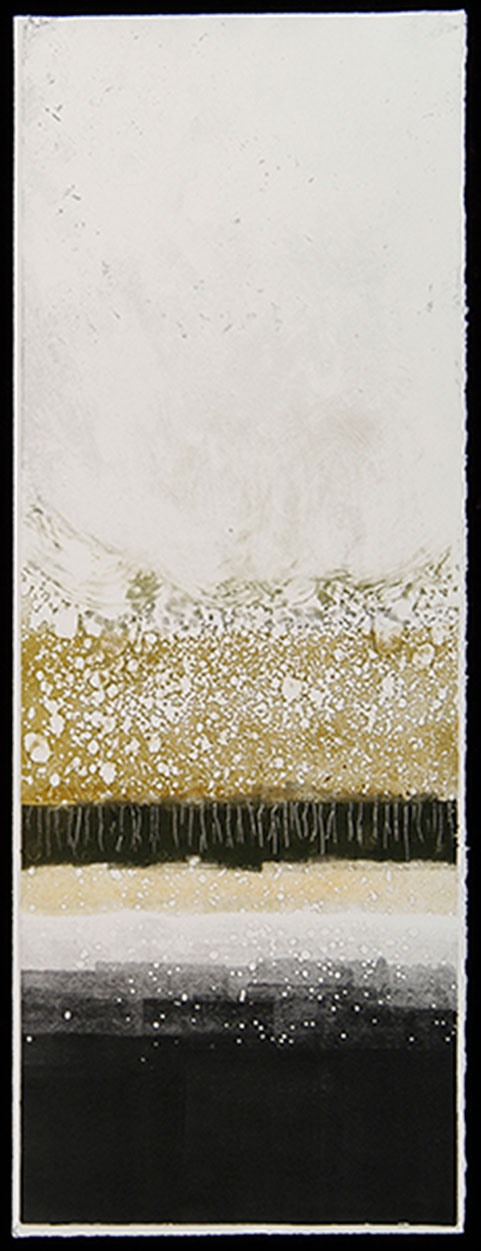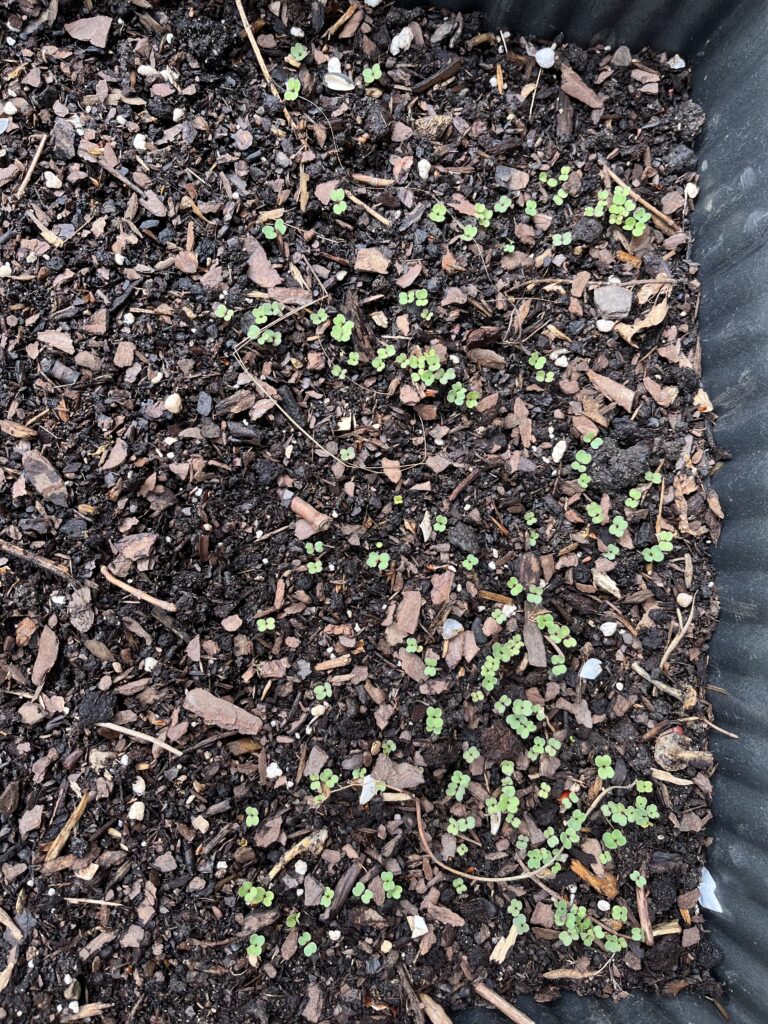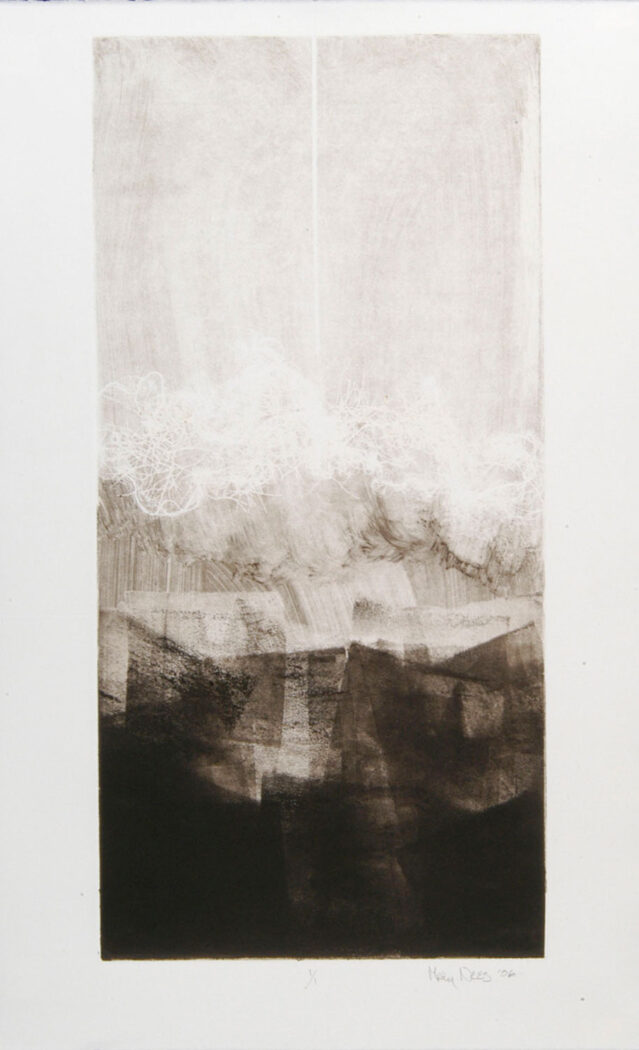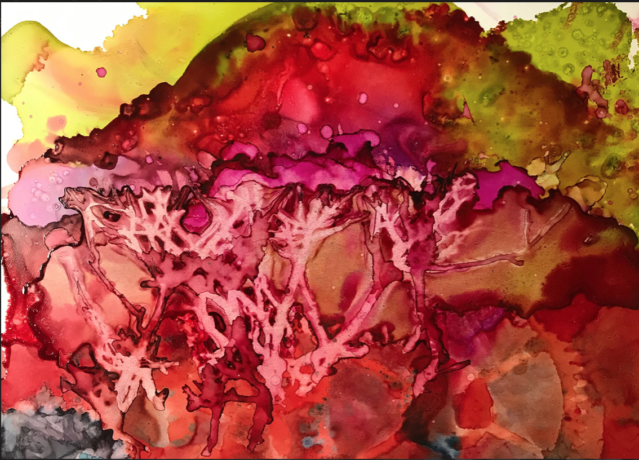I painted this large canvas over 25 years ago. It was an experiment in abstraction when I was still learning to work with paint. It was a wild ride, this piece, and so I kept it as a marker, for I remember well my intention. During that time, I was exploring the nature and the purpose of creative expression: both for me personally, and also theologically. Questions about how or if gestural expression, or marks without words, could communicate had me questing, note taking, studying, observing and practicing. I have stacks of things now which someone someday will have to trash. But since this painting was so big, 40″x30”, I couldn’t stack it away. I liked it for the memory of my questions, and the explosion of these marks and hues around a theme. I was studying Genesis 1 at the time, pondering the advancing movements documented there of the Creator. I wanted to see if I could catch a glimpse.
Almost 2 years ago, I had a show with a lot of small landscapes I had accomplished in Italy. The 30-some works on paper were hung up by clothes pins in a small local gallery. That gallery owner needed a focal point for this show, so I brought over this abstract from my studio. The show was so well attended it was rather surprising, and several smalls sold that very night. I referred to this painting only in passing as I spoke for about 10 minutes about the nature of expression and my aims in doing visual work. A quiet man made a decision that evening and spoke with the Gallery about buying this larger work on canvas. I hadn’t intended on selling it, but acquiesced due to his thoughtful interest. That would have been enough satisfaction.
And then this past week, I was invited to a talk this same man, now my friend, gave. I had no idea that he planned to display my painting as a visual backdrop to some very meaningful words he delivered about his own contemplative journey into how the Creator is holding his heart. My friend walked the audience through the phrases in Psalm 23 and pointed to how those comforting words are suggested all through this/my own wild exploration of Genesis 1. I was rather stunned. My friend saw things, and accurately, which I never intended, but very likely the Originator (who envelops all) did.
I often query myself, especially when I’m feeling restless or tired: “why am I doing this?” “what is the aim?” “what will last which is eternally useful here?” “could I do it better?”
This piece you see is maybe not a great painting. I actually don’t know what makes something great. But what happened with this is great to me. The effect of the work is indeed timeless and not pointless. I got to be involved partnering in something big. I don’t make work for it to be a pretty copy, or a current fad. I don’t make work to further glut my studio. I don’t make work to gain a name for myself. I don’t make work to sell it (though it’s nice when it does). Sometimes I struggle to make work at all. But to make something which becomes a catalyst into someone else’s life in a meaningful way is of utmost value to me. Stunned by this realization, I’m happy to report that this is more than satisfaction; it is a humble fulfillment.
